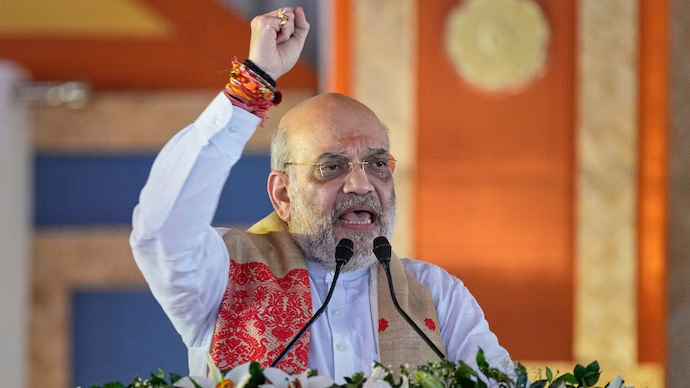Amit Shah Declares Abujhmarh and North Bastar Naxal-Free After 170 Surrenders
- MGMMTeam

- Oct 16
- 3 min read
In a landmark development in India’s fight against left-wing extremism, Union Home Minister Amit Shah announced on October 16, 2025, that the Abujhmarh and North Bastar regions in Chhattisgarh have been officially declared free from Naxal influence. This declaration follows the surrender of 170 Maoist insurgents and is a significant milestone in the government’s decades-long efforts to combat Naxal violence and promote development in these tribal-dominated regions.

Historical Context of Naxalism in Chhattisgarh
Chhattisgarh, particularly its dense forest regions of Abujhmarh and North Bastar, has long been a stronghold of Maoist insurgency. Naxal groups, exploiting local grievances such as land rights, poverty, and lack of infrastructure, established deep roots in these areas. For decades, the insurgency hindered development, disrupted governance, and posed severe security challenges for both state authorities and the local population. The government’s struggle to assert authority in these regions has been ongoing, with intermittent operations and peace initiatives over the years.
The Surrender of 170 Maoists: A Turning Point
The recent surrender of 170 Maoist insurgents signifies a remarkable shift in the dynamics of the conflict. Since January 2024, when the BJP government took charge in Chhattisgarh, over 2,100 Naxalites have voluntarily surrendered, 1,785 have been arrested, and 477 neutralized. These numbers highlight a steady erosion of Maoist strength in the state, driven by a combination of strategic counter-insurgency operations, community engagement, and rehabilitation efforts. Amit Shah emphasized that the government aims to completely eradicate Naxalism by March 31, 2026, and urged remaining insurgents to abandon violence and integrate into mainstream society.
Government Strategy: Security, Rehabilitation, and Development
The administration’s success in Chhattisgarh is rooted in a multi-dimensional approach. Security operations have been carefully coordinated to minimize civilian harm while dismantling insurgent networks. Parallelly, rehabilitation programs have offered insurgents an alternative to violence. These include financial support, vocational training, skill development, and constitutional safeguards for reintegration into society. Experts note that combining law enforcement with socio-economic incentives significantly increases the likelihood of lasting peace in formerly insurgent-dominated regions.
Socio-Economic Impacts and Development Opportunities
Declaring Abujhmarh and North Bastar as Naxal-free zones is expected to transform the socio-economic landscape. For decades, these regions were cut off from basic services like healthcare, education, and transportation due to security threats. With the decline of insurgent influence, the government can now implement infrastructure projects, improve governance, and facilitate economic opportunities for local communities. Tribal populations, who bore the brunt of the conflict, are likely to benefit from renewed access to markets, schools, and healthcare facilities, creating a sense of stability and hope for future generations.
Challenges and the Path Ahead
While the declaration is a major achievement, experts caution that long-term stability requires continuous engagement. The government must ensure that development initiatives are inclusive, culturally sensitive, and sustainable to prevent a resurgence of extremism. Community participation, transparent governance, and monitoring of rehabilitation programs will be critical in consolidating these gains.
The MGMM Outlook
The recent declaration by Union Home Minister Amit Shah that Abujhmarh and North Bastar in Chhattisgarh are now Naxal-free is a landmark achievement in India’s fight against left-wing extremism. This milestone follows the surrender of 170 Maoist insurgents, reflecting a significant weakening of Naxal influence in regions that were historically strongholds of the insurgency. For decades, these tribal-dominated areas faced disruptions in governance, limited access to basic services, and persistent insecurity due to Maoist activities. The government’s approach, which combines strategic security operations with rehabilitation programs offering financial aid, vocational training, and social reintegration, has proven effective in gradually dismantling insurgent networks and restoring the authority of the state.
The Naxal-free declaration also opens the door for transformative socio-economic development in these regions. With security threats receding, local communities can now benefit from improved infrastructure, education, healthcare, and economic opportunities that were previously inaccessible. Ensuring that development initiatives are inclusive, culturally sensitive, and community-driven will be critical to sustaining peace and preventing a resurgence of extremism. The government’s integrated strategy demonstrates that a balanced focus on law enforcement, rehabilitation, and development can create lasting stability, empowering tribal populations and providing them with opportunities for growth and prosperity that were long denied.
(Sources: India Today, Hindustan Times, India TV News)




Comments